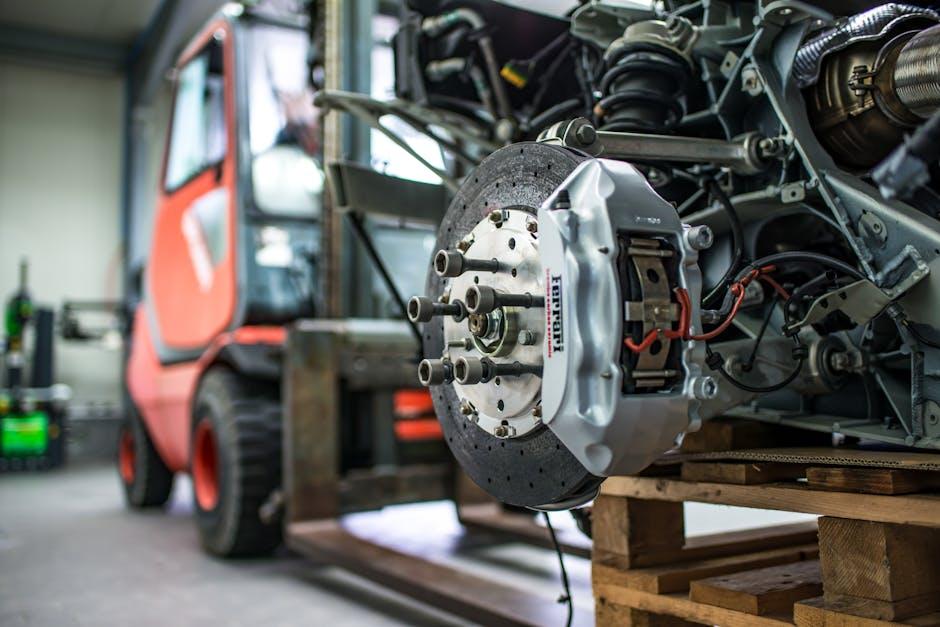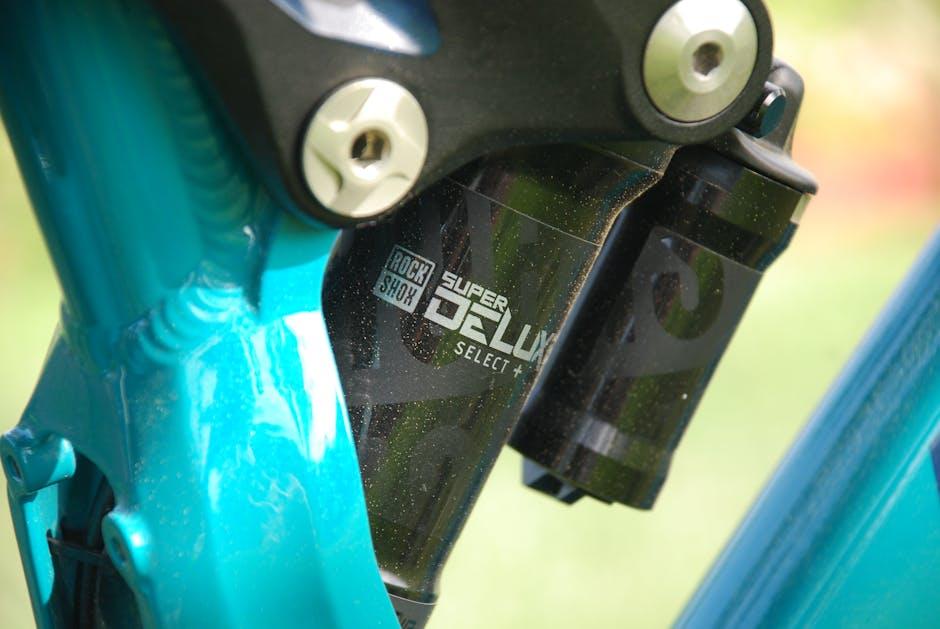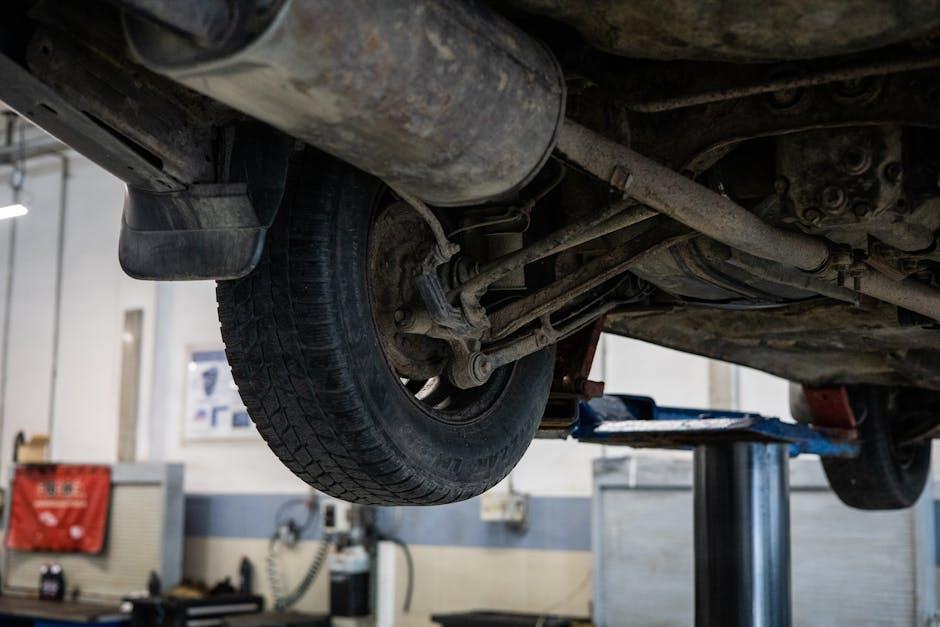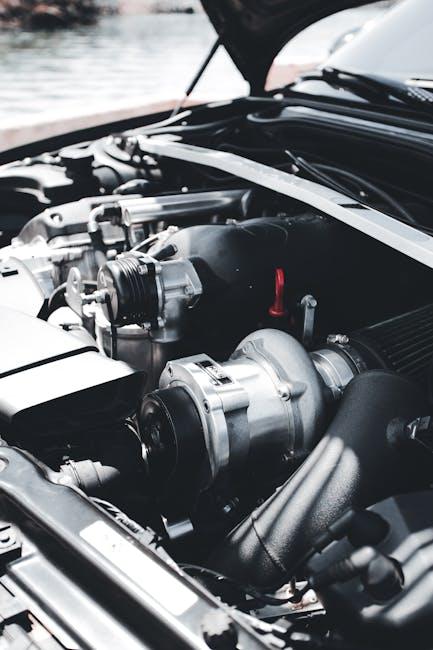Suspension systems are the silent heroes of every vehicle’s journey, tirelessly smoothing out bumps and maintaining control on even the roughest roads. But like any hardworking mechanism, they need care and attention to perform at their best. One crucial yet often overlooked maintenance task is lubricating suspension parts. Proper lubrication not only reduces friction and wear but also extends the lifespan of these vital components. In this article, we’ll explore the step-by-step process of how to lubricate suspension parts effectively, helping you keep your ride comfortable and reliable mile after mile.
Table of Contents
- Choosing the Right Lubricant for Your Suspension System
- Preparing Suspension Parts for Effective Lubrication
- Step-by-Step Guide to Applying Lubricant on Key Suspension Components
- Common Mistakes to Avoid When Lubricating Suspension Parts
- Tips for Maintaining Lubricated Suspension for Long-Term Performance
- When to Seek Professional Help for Suspension Lubrication Issues
- Q&A
- Wrapping Up

Choosing the Right Lubricant for Your Suspension System
Selecting the ideal lubricant for your suspension system is crucial to maintain smooth operation and extend the lifespan of its components. While there are numerous options available, it’s essential to choose a lubricant that offers excellent viscosity, resistance to water washout, and compatibility with rubber and metal parts. Commonly used lubricants include synthetic greases, silicone-based lubricants, and petroleum-based greases, each offering unique benefits tailored to different suspension setups and driving conditions.
When making your choice, consider the following factors:
- Temperature range: Ensure the lubricant can withstand extreme weather without breaking down.
- Water resistance: The lubricant should repel moisture and prevent corrosion.
- Adhesion: Choose a formula that clings well to moving parts, preventing flinging during operation.
- Compatibility: Confirm it won’t degrade rubber seals or plastic components.
| Lubricant Type | Best For | Key Feature |
|---|---|---|
| Synthetic Grease | High-performance vehicles | Long-lasting & heat resistant |
| Silicone-based | Rubber seals & bushings | Non-reactive & flexible |
| Petroleum Grease | General use | Affordable & effective |

Preparing Suspension Parts for Effective Lubrication
Before diving into the lubrication process, it’s crucial to ensure all suspension components are clean and free from debris or rust. Start by gently wiping down each part with a clean rag or using a mild degreaser for stubborn grime. This preparation not only enhances lubricant adhesion but also prevents contaminants from causing premature wear. Always inspect components for any signs of damage or excessive wear — addressing these issues beforehand will save time and protect the vehicle’s overall performance.
Organizing your workspace and gathering the right tools can streamline the lubrication task and reduce frustration. A well-prepped area might include:
- High-quality grease or lubricants suitable for suspension systems
- Clean rags or brushes for wiping and application
- Protective gloves to keep hands clean
- Correct size wrenches or sockets for accessing the parts
- Jack stands or lifts to safely elevate the vehicle if needed
| Suspension Part | Recommended Prep | Key Checkpoint |
|---|---|---|
| Ball Joints | Wipe clean, remove old grease | Check for looseness |
| Control Arm Bushings | Inspect rubber condition, clean surface | Look for cracks or deterioration |
| Shock Absorber Mounts | Clear dirt, ensure secure mounting | Check for wear and damage |

Step-by-Step Guide to Applying Lubricant on Key Suspension Components
Begin by gathering all necessary tools and supplies: a high-quality lubricant suitable for suspension parts, clean rags, a jack, and protective gloves. Safely lift the vehicle and secure it using jack stands to access the suspension components easily. Start by identifying critical lubrication points such as ball joints, bushings, and control arm pivots. Using a grease gun or spray lubricant, apply a thin, even layer to each joint, being careful not to oversaturate. This ensures the lubricant penetrates deep into the moving parts, reducing friction and wear without causing buildup.
After applying the lubricant, manually move the suspension components to evenly distribute the grease and detect any areas that might have been missed. Wipe away any excess lubricant with a clean rag to prevent attracting dirt and debris. Maintaining a consistent lubrication schedule based on your vehicle manufacturer’s recommendations will extend the life of these essential components and improve overall ride quality.

Common Mistakes to Avoid When Lubricating Suspension Parts
One of the most frequent errors is using the wrong type of lubricant, which can lead to accelerated wear or even component failure. Not every suspension part requires the same formula; choosing a grease that’s incompatible with rubber bushings or seals can cause premature deterioration. Always check your vehicle’s manual or manufacturer’s recommendations to select the correct product. Additionally, over-lubricating is just as harmful as under-lubricating – excess grease can attract dirt and grime, which work like sandpaper against delicate suspension mechanics.
Another common pitfall is neglecting proper surface preparation before applying lubricant. Failing to clean dirt, old grease, and corrosion away can prevent the lubricant from adequately penetrating moving parts. Remember these essential steps:
- Thoroughly clean the suspension components to remove debris and contaminants.
- Inspect for signs of wear, cracks, or damage before lubrication.
- Use appropriate tools to apply lubricant evenly without over-saturating.
| Common Mistake | Potential Issue | Best Practice |
|---|---|---|
| Using incorrect lubricant | Component degradation | Check manufacturer specs |
| Over-application | Dirt accumulation | Apply sparingly |
| Not cleaning surfaces | Poor lubrication coverage | Thorough cleaning |

Tips for Maintaining Lubricated Suspension for Long-Term Performance
Ensuring your suspension stays well-lubricated requires a consistent maintenance routine combined with attention to detail. Start by selecting the appropriate lubricants specifically designed for suspension components, such as high-quality silicone or lithium-based greases. Regularly cleaning the suspension parts before lubrication is crucial—remove dirt, old grease, and debris to prevent abrasive materials from damaging seals and joints. Pay close attention to moving joints, bushings, and shock absorbers, where friction is most intense. Remember, over-lubricating can attract unwanted grime, so apply the lubricant sparingly but thoroughly.
Staying proactive will extend the life of your suspension system and enhance vehicle performance. Incorporate these simple yet effective habits into your maintenance schedule:
- Inspect monthly: Check for dry spots or signs of wear on suspension bolts and joints.
- Use the right tools: Employ grease guns or applicators to reach tight spaces.
- Follow manufacturer guidelines: Different suspension types may require specific lubricants or intervals.
- Protect components: Apply protective sprays to prevent corrosion after lubrication.
| Suspension Part | Recommended Lubricant | Lubrication Frequency |
|---|---|---|
| Shock Absorber Bushings | Lithium Grease | Every 3 months |
| Control Arm Joints | Silicone Grease | Every 4 months |
| Ball Joints | Multi-purpose Grease | Every 2 months |

When to Seek Professional Help for Suspension Lubrication Issues
Even with regular maintenance, there are moments when your suspension system’s lubrication needs extend beyond a routine check. If you notice persistent squeaking, unusual noises, or uneven suspension movement after applying lubricant, it could signal deeper mechanical issues. Attempting to fix these problems without proper tools or expertise may worsen the situation or compromise vehicle safety.
Here are some key signs indicating it’s time to contact a professional mechanic:
- Visible damage or corrosion on suspension components
- Lubricant that doesn’t seem to penetrate or stay put
- Excessive play or looseness in suspension joints after lubrication
- Warning lights on the dashboard related to suspension or stability control
- Difficulty in steering or handling despite lubrication efforts
| Symptom | Possible Cause | Professional Action |
|---|---|---|
| Grease leakage | Damaged seals | Seal replacement |
| Persistent noise | Worn bushings | Bushing inspection & replacement |
| Unsteady ride | Misaligned suspension | Suspension alignment |
Q&A
Q: Why is lubricating suspension parts important?
A: Lubrication reduces friction and wear between moving suspension components, enhancing performance, extending lifespan, and ensuring a smoother, safer ride.
Q: Which suspension parts typically require lubrication?
A: Commonly lubricated parts include ball joints, bushings, control arm pivots, tie rod ends, and shock absorber mounts—areas where metal moves against metal or rubber components benefit from regular lubrication.
Q: How often should suspension parts be lubricated?
A: It depends on the vehicle and driving conditions, but generally, lubrication every 12,000 to 15,000 miles or during routine maintenance checks is recommended.
Q: What type of lubricant should I use for suspension parts?
A: Use a high-quality grease designed for automotive suspension, typically a lithium or molybdenum-based grease, which resists moisture and withstands heavy pressure.
Q: Can I lubricate suspension parts myself?
A: Yes, with the right tools, access, and knowledge. Many suspension components have grease fittings (zerk fittings) that make lubrication straightforward. However, safety and proper technique are crucial.
Q: What tools do I need to lubricate suspension parts?
A: A grease gun, compatible lubricant, gloves, a jack and jack stands (for lifting the vehicle safely), and possibly a rag for cleanup will cover most lubrication tasks.
Q: How do I know if my suspension parts need lubrication?
A: Signs include squeaking noises, stiffness, uneven tire wear, or vibration during driving—all can indicate dry or worn components requiring attention.
Q: Are there suspension parts that shouldn’t be lubricated?
A: Yes, some modern suspension components like sealed ball joints and bushings are designed to be maintenance-free and should not be lubricated.
Q: What precautions should I take when lubricating suspension parts?
A: Always work on a stable, level surface, secure the vehicle with jack stands, avoid over-greasing, and use protective gear to prevent injury and contamination.
Q: Can improper lubrication cause damage?
A: Absolutely. Using the wrong type of lubricant or excessive grease can attract dirt, cause premature wear, or interfere with component function, so following manufacturer recommendations is key.
Wrapping Up
Maintaining smooth and responsive suspension parts is essential for a safe and comfortable ride, and proper lubrication plays a starring role in this performance. By taking the time to carefully clean, select the right lubricant, and apply it correctly, you’re not just preserving your vehicle’s components—you’re extending their life and enhancing your driving experience. Whether you’re a seasoned mechanic or a weekend DIYer, mastering the art of suspension lubrication transforms routine upkeep into a reliable ritual. So, roll up your sleeves, stay curious, and keep your suspension singing the smoothest tune on every journey ahead.

